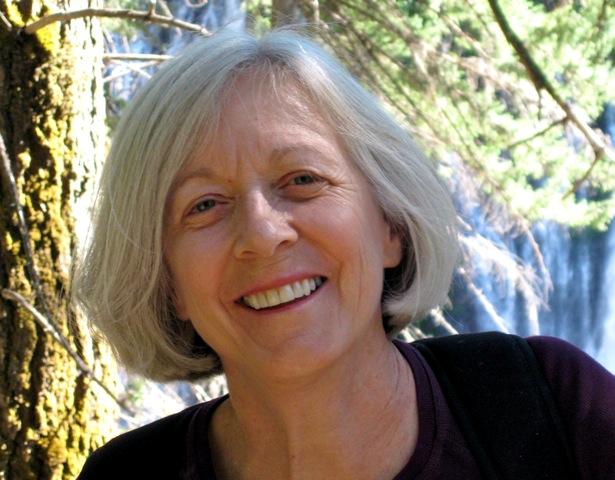Share
Loggers blame politicians. Politicians blame climate change. President Donald Trump claims that California doesn’t know how to manage its forests.
While the finger-pointing goes on, Mother Nature doesn’t care.
Listen to this article:
California has set a record with 2 million acres burned this year, and the Creek Fire rages on. Moreover, what is typically the worst part of the wildfire season is just beginning.
Trump signed an executive order in 2018 in an effort to help manage forests better in hopes of alleviating fire danger. Are forests any better for it?
Those that intimately know the terrain after years of driving its dusty logging roads say the order was too little, too late. Those in academia that study fires don’t think logging alone can solve the problem. They finger climate change.
And, the state of California just recently took a step to reshape how its forests are managed.
Meanwhile, Valley loggers are putting their skills toward firefighting now.
Current Logger
“They’ve not managed the forest in any way, shape, or form,” says logger Jon Jackson. “There’s billions of board feet of timber that’s been dead up there for 10 to 20 years.”
Jackson has been logging the area for 30 years.
“I blame bureaucratic liberals,” says Jackson. “It’s a political ballgame.”
Jackson says Southern California Edison has proactively maintained its private forestland. He says in the last five years, he’s helped SCE take out many dead trees. The utility company then uses controlled burns to clear them out.
Jackson says he’s approached the U.S. Forest Service about doing more in the area and offered to help clear dead and dying trees.
“The response you get? It (no) comes from upstairs,” said Jackson, referring to the federal government.
GV Wire℠ asked Jackson if President Trump’s executive order in 2018 did anything to help spur more logging and thinning of the forest.
“It was too little, too late,” said Jackson.
Jackson said that the only working sawmill in the area in Terra Bella isn’t sufficient to process the number of felled trees.
He estimated that in the area of the Creek Fire there are probably between 800 to 900 trees per acre.
“It should be about 200 trees per acre,” Jackson said.
Since he’s not doing any logging due to the fire, he’ll be on the fire lines working with several other “tree fellers” and a couple of bulldozers to make fire breaks.

Retired Logger
Allen Jackson, who is Jon’s uncle, logged the Creek Fire area for 46 years.
“We’ve loved our forests to death,” Allen Jackson told GV Wire℠ by phone.
He’s referring to the U.S. Forest Service, the Sierra Club, and politicians advocating for tree preservation over forest management for decades.
“We took a hands-off approach after the Clinton administration,” said Allen Jackson. “We didn’t used to have these kinds of fires.”
He started logging in 1969. He says back then, logging was seen as a well-paying job that could generate hundreds of millions of dollars for nearby communities.
But, during the 1980s and ’90s, he saw “a radical change.”
“The U.S. Forest Service stopped logging and was only focused on roadside hazards,” Jackson said.
As for the Creek Fire?
“We have 10 loggers in that area doing nothing because they have to sit on their hands.”
Reshaping Forest Management in California

“Logging is not the answer. “Defensible space and home hardening are what need to be emphasized moving forward.”— Kathryn Phillips, executive director of Sierra Club California
California has been increasing its efforts. Earlier this month, according to the San Jose Mercury News, in a little-noticed milestone, state officials signed a major agreement with the federal government that aims to reshape how forests are managed for years to come.
Under the plan, California agencies and the U.S. Forest Service will use brush clearing, logging, and prescribed fires to thin out 1 million acres a year by 2025 — an area larger than Yosemite National Park every 12 months, and roughly double the current rate of thinning, which already is double the rates from a few years ago.
The Forest Service and the state Natural Resources Agency also committed to drawing up a 20-year plan by next year to identify which areas of the state will get priority for thinning projects. They will update it every five years and share it with the public.
Environmental groups say they generally support the more aggressive thinning plan. But they have concerns.
“Logging is not the answer,” Phillips told GV Wire℠ by phone. “Defensible space and home hardening are what need to be emphasized moving forward.”
She said that homes built before 1980 need to make sure their attic vent has a screen over it to catch fire embers and prevent them from getting into the attic. She also said that homes that burn typically do not have the recommended 100 feet of defensible space around them.
While there may be a place for logging in the forest management plan, Phillips said, she wants the science to drive the decision making — not the logging industry.
Phillips’s views were echoed by Shaye Wolf, climate science director for the Center for Biological Diversity.
“Thinning isn’t an effective way to protect communities during wildfire,” Wolf said via email. “Thinning doesn’t stop fires and can even make fires burn hotter and faster. The Creek Fire rapidly burned through areas that were recently logged (including the removal of large dead trees) under the claim that this would curb future fire. In fact, the logged areas are where the fire spread fastest.”

California Forestry Association

“The forests continue on average to get denser and denser because of the significant annual growth compared to annual vegetative treatments.”–Rich Gordon, president and CEO of the California Forestry Association
GV Wire℠ reached out to the California Forestry Association with questions about forest management.
President and CEO Rich Gordon provided these responses.
GV Wire℠: The president signed an executive order in 2018 to allow for more forest thinning and logging to help prevent wildfires. Has that executive order helped? Has it been fully enacted?
Gordon: “The Forest Service, California Region, has been increasing their forest thinning program significantly since 2017. Since 2017, there has been a 35% increase in mechanical thinning from 254 million board feet sold (50,000 acres of mechanical thinning) to near 400 million board feet sold (80,000 acres of mechanical thinning).
Compared to 2010-2017, overall fuels reduction acres (mechanical thinning, hand thinning, prescribed burning, mastication) has increased about the same percentage. This is a sizeable increase.”
Is enough logging occurring in California to thin forests after our drought and bark beetle infestation?
Gordon: “Mechanical thinning including sold commercial timber volume is now near 400 million board feet per year. Annual growth on productive forest land available for active management on the National Forests in California is 3.6 billion board feet per year. Hence, only 11% of annual growth is being sold to be harvested. The forest continues to get denser and denser.
The Regional Forester in March 2011 recognized publicly in writing that the Forest Service, California Region, had to get to 500,000 acres/year of fuels reduction for 15-20 years to move the 9 million acres of productive forestland available for active management to a condition that would be resistant to wildfire, insects, and disease. In recent years, they have been able to increase annual fuels reduction accomplishment to on average to about 216,000 to 271,000 acres per year; about ½ their goal.
Again, as a result, the forests continue on average to get denser and denser because of the significant annual growth compared to annual vegetative treatments.”



















